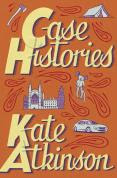
Gardening is perhaps a little like housework I think, in that it's not really possible to show what's no longer there in the same way that nobody really notices a dog hair free carpet or a sparkling basin. But boy, do you feel the muscle burn in your arms and back. Reduced to a couple of photos from a mobile phone, my two raised flower beds here don't even seem much to show for a week's work. But - and you can only take my word for it I know, so please trust me on this one - this is an enormous transformation of my little back garden.
My little house by the seaside had been empty and close to derelict for about 4 years before Roo, the dog and I moved here in August 2007. Prior to that, the garden itself had been more or less untouched for the best part of 40 years. My great grandmother had always loved her little garden, planted it with bluebells, scrubbed the brick red cobble stones and kept it neat and tidy, but all that stopped when she died in 1966. Her son, my great Uncle Roy, left behind in the house after his mother's death, was not really one for the keeping of gardens any more than he was one for the keeping of much company beyond cricket, Proust, Kafka and Tchaikovsky.
How he loved his books and music. As a childhood visitor here, I'd blow the dust from one of the huge Bakelite 78rpm records and put it carefully on the old dark wooden gramophone, lowering the fat needle carefully onto its edge and cranking the handle round and round and round to spin the turntable. Uncle Roy would watch with amused delight from behind a folded copy of The Daily Telegraph as the crackly sounds of a long-dead orchestra rose to the command of a ghostly conductor and filled the room with the most beautiful music. Outside, the sun might have been shining on the seaside visitors, the gulls circling waiting patiently for sticky toddler fingers to let slip their ice cream cones. But inside, in the dark coolness of the front room, the little house was temporally transformed into a Baroque concert hall, the shabby curtains replaced with lush velvet drapes and the battered brown armchair with a sumptuously carved chaise longue as the maestro stepped up to the podium and wielded his baton to let the magic fly, just one more time.
 Forty-odd years of debris takes a lot to undo, and at some point the general jungle-ness of the yard had been added to by the collapse of the rear wall and the influx of dumped rubbish from who knows where. Broken mirrors, shards of glass, bricks, tiles, plastic sacks full of women's clothes, crockery, all had conspired to submerge the garden and bury Grandma's cobbles under feet of soil and detritus. I lost count of how many sacks of rubble and rubbish and soil I've dug out by hand, bagged up and taken in my little car to the municipal tip.
Forty-odd years of debris takes a lot to undo, and at some point the general jungle-ness of the yard had been added to by the collapse of the rear wall and the influx of dumped rubbish from who knows where. Broken mirrors, shards of glass, bricks, tiles, plastic sacks full of women's clothes, crockery, all had conspired to submerge the garden and bury Grandma's cobbles under feet of soil and detritus. I lost count of how many sacks of rubble and rubbish and soil I've dug out by hand, bagged up and taken in my little car to the municipal tip. But at last, after a week or so of excavation and general shovelling around, the red brick cobbles are exposed once more and the garden looks more like a garden and less like a landfill site. I created two raised flower beds about two feet tall, one made entirely of the whole bricks I found in the yard, and one from huge wooden sleepers from the timber merchant a few miles away. Today, Roo and I went to our local garden centre and chose a selection of plants that we hope will grow and creep and climb and attract the bees and the birds. We planted climbing ivy, forsythia, anemones, pansies, lavender, clematis, honeysuckle, foxgloves, jasmine, a couple of tall grasses and several more things besides. At the weekend, I'll add some wildflower seeds and some summer-flowering bulbs.
At the top left of the first picture, you might also be able to pick out the little round bee house I bought at Flynn's Bee Farm the other day, a device full of thin cardboard tubes especially to attract solitary mason bees. For once, I hope it rains and rains and rains for the next few days, to wash the remains of the mud from the cobbles and to water the plants as they settle into their new home. Come summer, I hope that our little garden is filled with the heavy heady scents of the flowers and that it once more throbs and dances to the music of the bees.























